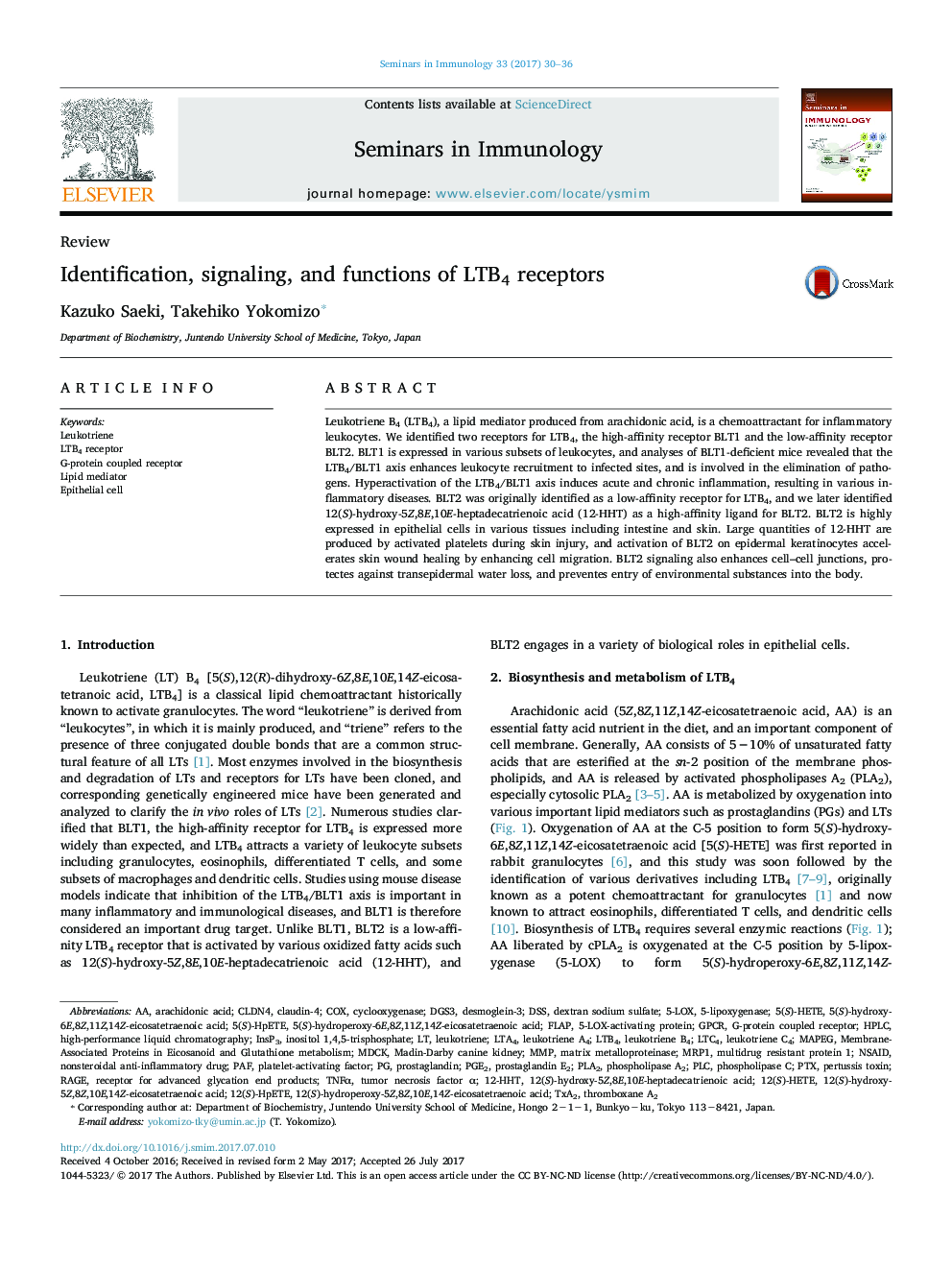| Article ID | Journal | Published Year | Pages | File Type |
|---|---|---|---|---|
| 8743721 | Seminars in Immunology | 2017 | 7 Pages |
Abstract
Leukotriene B4 (LTB4), a lipid mediator produced from arachidonic acid, is a chemoattractant for inflammatory leukocytes. We identified two receptors for LTB4, the high-affinity receptor BLT1 and the low-affinity receptor BLT2. BLT1 is expressed in various subsets of leukocytes, and analyses of BLT1-deficient mice revealed that the LTB4/BLT1 axis enhances leukocyte recruitment to infected sites, and is involved in the elimination of pathogens. Hyperactivation of the LTB4/BLT1 axis induces acute and chronic inflammation, resulting in various inflammatory diseases. BLT2 was originally identified as a low-affinity receptor for LTB4, and we later identified 12(S)-hydroxy-5Z,8E,10E-heptadecatrienoic acid (12-HHT) as a high-affinity ligand for BLT2. BLT2 is highly expressed in epithelial cells in various tissues including intestine and skin. Large quantities of 12-HHT are produced by activated platelets during skin injury, and activation of BLT2 on epidermal keratinocytes accelerates skin wound healing by enhancing cell migration. BLT2 signaling also enhances cell-cell junctions, protectes against transepidermal water loss, and preventes entry of environmental substances into the body.
Keywords
MRP1PTX5-LOXRAGEMMPPLA2TxA2MDCKLTC4LTB4MAPEGInsP3LTA412(S)-HPETE5(S)-HETEmembrane-associated proteins in eicosanoid and glutathione metabolismCLDN4TNFαNSAIDDSS12-HHTPGE2COXGPCRPLC12(S)-HETE5-LipoxygenaseG-protein coupled receptorinositol 1,4,5-trisphosphatecyclooxygenasephospholipase A2Arachidonic acidFlapThromboxane A2tumor necrosis factor αnonsteroidal anti-inflammatory drugepithelial cellpertussis toxindextran sodium sulfatePlatelet-activating factorphospholipase CLeukotriene A4Leukotriene B4Leukotriene C4Leukotrienematrix metalloproteinasePAFLipid mediatorProstaglandin E2prostaglandinhigh-performance liquid chromatographyHPLCClaudin-4Madin-Darby canine kidneyReceptor for advanced glycation end products
Related Topics
Life Sciences
Immunology and Microbiology
Immunology
Authors
Kazuko Saeki, Takehiko Yokomizo,
